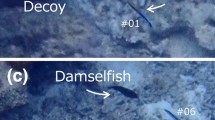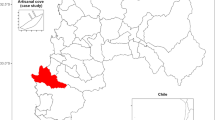Abstract
Shared fish stocks migrate across borders between different countries’ exclusive economic zones. This paper discusses the individual rationality of fish-sharing agreements based on the zonal attachment of such stocks. Three types of migrations are considered: (i) a common stock that grows and reproduces and is then distributed in given proportions between two countries’ zones at the beginning of each fishing season; (ii) sub-stocks that breed and grow independently in their separate zones but spill over between zones according to relative abundance; (iii) a stock that grows and breeds in one country’s zone but migrates into the zone of another if it exceeds a certain size. It is shown that in all these cases the minor partner in a fish-sharing agreement may not have an incentive to cooperate unless he gets a larger share of the cooperative profits than that corresponds to his share of the stock. This is particularly likely to happen when the unit cost of fish does not depend on the stock. An exception could occur if stock migration depends on the stock level; the major partner could then keep the entire stock by fishing it down to a critical level.
Similar content being viewed by others
References
T. Bjørndal (1987) ArticleTitle‘Production Economics and Optimal Stock Size in a North Atlantic Fishery’ Scandinavian Journal of Economics 89 145–164
T. Bjørndal (2000) ArticleTitle‘Special Issue Introduction’ Marine Resource Economics 17 261–263
C. W. Clark (1973) ArticleTitle‘Profit Maximization and the Extinction of Animal Species’ Journal of Political Economy 81 950–961 Occurrence Handle10.1086/260090
S. Engesæter (1993) ArticleTitle‘Scientific Input to International Fish Agreements. International Challenges’ The Fridtjof Nansen Institute Journal 13 IssueID2 85–106
Hamre, J. (1993), ‘A Model of Estimating Biological Attachment of Fish Stocks to Exclusive Economic Zones’, in International Council for the Exploration of the Sea. C.M. 1993/D:43, Copenhagen.
R. Hannesson (1997) ArticleTitle‘Fishing as a Supergame’ Journal of Environmental Economics and Management 32 309–322 Occurrence Handle10.1006/jeem.1997.0971
Hannesson, R. (2006), Sharing the Herring: Fish Migrations, Strategic Advantage, and Climate Change, in Hannesson, M. Barange and S. Herrick (Eds.): Climate Change and the Economics of the World's Fisheries. Edward Elgar (in press)
ICES (1978), ‘The Biology, Distribution and State of Exploitation of Shared Stocks in the North Sea Area’, in Cooperative Research Report No. 74, Copenhagen: International Council for the Exploration of the Sea
J. Kennedy (2003) ArticleTitle‘Scope for Efficient Multinational Exploitation of North-East Atlantic Mackerel’ Marine Resource Economics 18 55–80
R. W. McKelvey L. K. Sandal S. I. Steinshamn (2002) ArticleTitle‘Fish Wars on the High Seas: A Straddling Stock Competitive Model’ International Game Theory Review 4 53–69 Occurrence Handle10.1142/S0219198902000549
R. W. McKelvey L. K. Sandal S. I. Steinshamn (2003) ArticleTitle‘Regional Fisheries Management on the High Seas: The Hit-and-Run Interloper Model’ International Game Theory Review 5 1–19 Occurrence Handle10.1142/S0219198903001070
E. H. Sissener T. Bjørndal (2005) ArticleTitle‘Climate Change and the Migratory Pattern for Norwegian Spring-spawning Herring Implications for Management’ Marine Policy 29 299–309 Occurrence Handle10.1016/j.marpol.2004.04.002
Author information
Authors and Affiliations
Corresponding author
Rights and permissions
About this article
Cite this article
Hannesson, R. Individual Rationality and the “Zonal Attachment” Principle: Three Stock Migration Models. Environ Resource Econ 34, 229–245 (2006). https://doi.org/10.1007/s10640-005-0005-5
Accepted:
Issue Date:
DOI: https://doi.org/10.1007/s10640-005-0005-5




